Young marine researchers' networking space in the old Hanse town of Stralsund, Germany, 10 to 12 September 2014
by Cornelia E Nauen
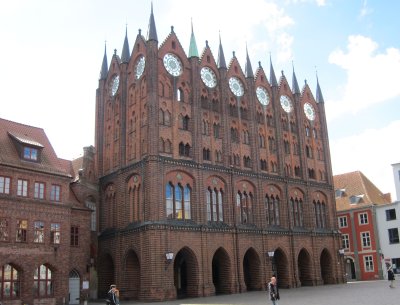 Fortunes have been created and undone in the historical Hanse town of Stralsund. Once the most powerful city in the Baltic thanks to the sea's silver – herring – and salt, the city lost some of its luster when the trading association declined. Gateway to the beautiful island of Ruegen and recently declared a World Heritage Site by UNESCO, Stralsund is now heavily engaged in restoring the centre of town to its former glory and draws its economic lifeline from construction, tourism, the Ozeaneum and other services connecting inhabitants and visitors to the sea and its conservation.
Fortunes have been created and undone in the historical Hanse town of Stralsund. Once the most powerful city in the Baltic thanks to the sea's silver – herring – and salt, the city lost some of its luster when the trading association declined. Gateway to the beautiful island of Ruegen and recently declared a World Heritage Site by UNESCO, Stralsund is now heavily engaged in restoring the centre of town to its former glory and draws its economic lifeline from construction, tourism, the Ozeaneum and other services connecting inhabitants and visitors to the sea and its conservation.
The YOUMARES networking conference for young marine scientists is in its fifth year as an outgrowth of the working group “Research and Teaching” of the German Association for Marine Research (DGM), which also held its annual assembly in the occasion.
By now a well-established event attracting students and young scientists not only from Germany, but also neighbouring countries, it was organised by a new team, headed by Vera Golz and Christian Jessen, but working with the same dedication for creating welcoming conditions for the more than 100 active participants brought together in the beautiful setting of the Ozeaneum.
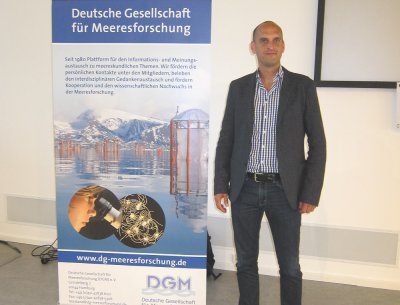 The conference proper was preceded on 10 September by the FINET workshop on game theory as applied to fisheries organised by Giovanni Romagnoni from Oslo University, Norway, Sophia Kochalski of Liverpool University, UK, formerly Berlin University, Germany, and Corinna Schendel.
The conference proper was preceded on 10 September by the FINET workshop on game theory as applied to fisheries organised by Giovanni Romagnoni from Oslo University, Norway, Sophia Kochalski of Liverpool University, UK, formerly Berlin University, Germany, and Corinna Schendel.
Several participants presented one landmark game theory publication each to help understand key concepts and trigger debate.
An icebreaker gathering in the evening was the first opportunity for all participants to meet and socialise over a drink.
Keynotes of confirmed scientists opened the conference the following day.
Three major sessions helped structure the day.
Several papers each were presented under the session themes: Small-scale fisheries, cold water research, and tools and methods supporting an ecosystem-based approach to marine spatial planning.
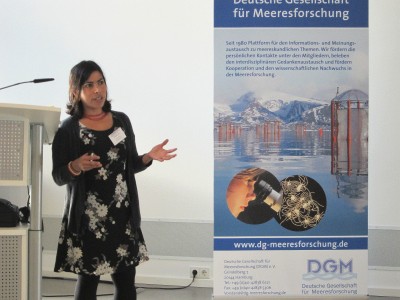 Soledad Luna of the University of Technology, Dresden, Germany, introduced the session on small-scale fisheries. She underscored the importance of demarginalising this significant socio-economic sector, particularly in the light of catch reconstructions revealing their under-rated socio-economic weight.
Soledad Luna of the University of Technology, Dresden, Germany, introduced the session on small-scale fisheries. She underscored the importance of demarginalising this significant socio-economic sector, particularly in the light of catch reconstructions revealing their under-rated socio-economic weight.
These reconstructions - true pieces of scientific detective work in all countries and major islands - are carried out through world-wide collaborations instigated and coordinated by the Sea Around Us Project at the University of British Columbia, Vancouver, Canada. This is where her co-session leader, Anna Schuhbauer, is based.
Sophia Kochalski gave a catchy account of her research into the cockle fisheries in nearshore waters in the UK, which she investigated from the perspective of sustainability and resilience. She used a multi-criteria assessment scheme and concluded that at the macro-level sustainability was broadly ensured even though at micro-level the overcapacity gave rise to some concern. However, experienced full time fishers had opportunities to switch to other species should the stocks suffer, while new entries or part-time fishers were expected to be able to diversify into other jobs if need be.
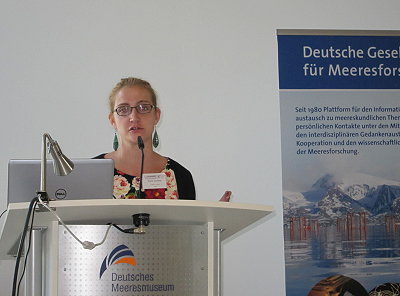 Malin Anderson of Lund University in Sweden presented her empirical research on fishermen's perceptions about sustainability through analysing discourses confirming widespread resistance to top-down management measures.
Malin Anderson of Lund University in Sweden presented her empirical research on fishermen's perceptions about sustainability through analysing discourses confirming widespread resistance to top-down management measures.
Lotta C Kluger and G.A. Castellanos Galindo shared some comparisons between use of mangroves in Western Colombia and Northern Peru, research done as part of the MAPES Project. In Colombia, with modest population densities mostly of Afro-Indian descent and hardly any market access, species richness was greater, but social conditions tougher. Conversely, the Peruvian exploitation and transformation of what was originally a dense mangrove area was much more diversified with economic activities from ecotourism to shrimp production providing an economic base for much higher population densities. The jury is still out which system is more resilient to diverse shocks and changes. It was certainly not a simplistic case of ecodeterminism. Listening to the oral presentation conjured up images of large populations and complex ecological and governance systems across the Americas prior to Columbus as they are grippingly summarised by Charles Mann in "1491" based on the last three to four decades of research.
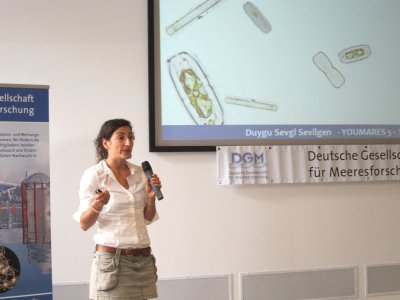 Lena von Nordheim of the University of Rostock and the Thünen Institute in Hamburg, Germany, discussed historical trajectories of herring fisheries in the Greifswalder Bodden and compared hatching success in different natural substrates with laboratory tests in order to understand the extent to which habitat degradation might affect reproductive success of herring targeted by coastal fisheries. Sure enough it does, but the herring still follow their homing instinct and spawn, with some success, in the Bodden area.
Lena von Nordheim of the University of Rostock and the Thünen Institute in Hamburg, Germany, discussed historical trajectories of herring fisheries in the Greifswalder Bodden and compared hatching success in different natural substrates with laboratory tests in order to understand the extent to which habitat degradation might affect reproductive success of herring targeted by coastal fisheries. Sure enough it does, but the herring still follow their homing instinct and spawn, with some success, in the Bodden area.
Ralf Hoffmann introduced the session on cold-water research and its relevance in the light of on-going climate change.
Duygu S. Sevilgen of the Max Planck Institute for Marine Microbiology in Bremen, Germany, gave a spirited summary of her PhD research comparing physiological performance of the microalgae on the seabottom in Svalbard, Spitzbergen, Norway, and Helgoland, Germany. The flora is dominated by diatoms which play an important ecological role at the sea-sea bottom interface. Species richness is greater in Spitzbergen than in the warmer waters of Helgoland, but primary production does not increase much when temperature rises, while net respiration does in the dark. This is considered an indication that there are more macrobenthos animals contributing to respiration and that photosynthesis of the algae is already at its maximum during the long summerdays. So it is suspected that the communities will change significantly over the longer term under on-going climate change conditions.
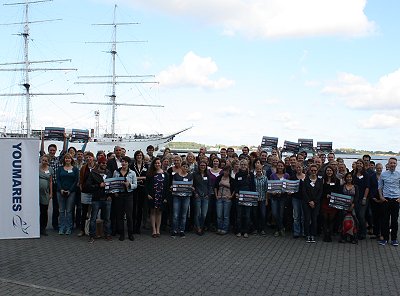 Michael D. Streicher reported on the succession of assemblages on hard bottoms as assessed in long-term experiments in Svalbard, Norway. Despite more than a decade of exposure, not all substrates were utilised in the cold waters as it took very long to achieve a mature community on virgin habitat under these circumstances. Henry Goehlich looked into another aspect of the changing habitats, namely the ability of some cold-water corals in Chilean fjords to cope with acidification arising out of ocean's absorption of large amounts of CO2 released into the atmosphere as a result of human activities. He found that the two species he investigated in the already slightly acid fjord waters were still able to build their skeletons, though they had to spent more energy for doing so. It will take further research to appreciate the implications under on-going climate change.
Michael D. Streicher reported on the succession of assemblages on hard bottoms as assessed in long-term experiments in Svalbard, Norway. Despite more than a decade of exposure, not all substrates were utilised in the cold waters as it took very long to achieve a mature community on virgin habitat under these circumstances. Henry Goehlich looked into another aspect of the changing habitats, namely the ability of some cold-water corals in Chilean fjords to cope with acidification arising out of ocean's absorption of large amounts of CO2 released into the atmosphere as a result of human activities. He found that the two species he investigated in the already slightly acid fjord waters were still able to build their skeletons, though they had to spent more energy for doing so. It will take further research to appreciate the implications under on-going climate change.
Antje Gimpel and Henrike Seidel, PhD researchers at the Thünen Institute in Hamburg, introduced the session on data-intensive methods by presenting management approaches for fisheries in Germany, which were outside the marine plan in the country. In data-rich situations such methods allow to explore non-conventional management options, something much in demand as business as usual is not an option anymore. Three other methodological and research papers were also presented.
After this intensive programme of oral presentations it was time for a menu of special workshops, e.g. on interdisciplinary research approaches, scientific publishing with Springer or short excursions into the historical town centre or the Ozeaneum.
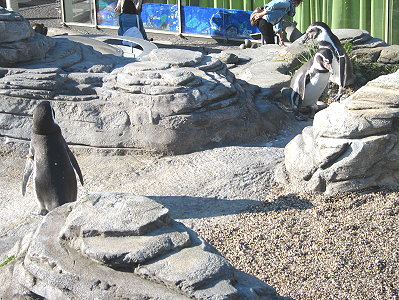 The poster session and an interesting talk by Prof. Detlef Schulz-Bull of the Leibniz Institute for Baltic Research in Warnemünde on oil pollution concluded the scientific part of the day. While only big tanker accidents capture the headlines and enter public consciousness, it's the many small events, washing of ballast water tanks and chronic pollution from harbour and platform spills that make up the bulk of oil pollution. Petroleum is a complex mix of many different molecules. The lightest ones evaporate quickly into the atmosphere, but the slicks affecting marine wildlife and habitats and the highly toxic aromatic components entering the foodweb are the biggest headaches. The HELCOM Convention has started to reduce petroleum pollution in the Baltic since the 1970s, but plenty of work still needs to be done to achieve good environmental status of all waters.
The poster session and an interesting talk by Prof. Detlef Schulz-Bull of the Leibniz Institute for Baltic Research in Warnemünde on oil pollution concluded the scientific part of the day. While only big tanker accidents capture the headlines and enter public consciousness, it's the many small events, washing of ballast water tanks and chronic pollution from harbour and platform spills that make up the bulk of oil pollution. Petroleum is a complex mix of many different molecules. The lightest ones evaporate quickly into the atmosphere, but the slicks affecting marine wildlife and habitats and the highly toxic aromatic components entering the foodweb are the biggest headaches. The HELCOM Convention has started to reduce petroleum pollution in the Baltic since the 1970s, but plenty of work still needs to be done to achieve good environmental status of all waters.
Interacting with the participants through questions and conversations offered excellent opportunities for Mundus maris for updating understanding in the light of some of the new research results presented as well as sharing insights from the interface with using sciences, local cultures and arts in addressing challenges to the ocean and in society.
The ubiquitous plastic problem was addressed during the last day of the networking event together with other sessions on coral reef ecology and conservation, aquaculture in a changing ocean and other themes. The event was concluded with an award ceremony for best oral presentation and best poster and, of course, the last round of networking over a post-conference drink.
Thumbs up for the young marine scientists!
Unless indicated otherwise, all photos by the author.








